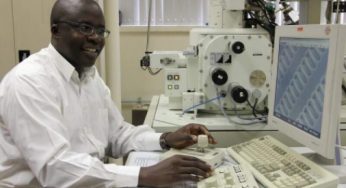NUS engineers get closer to spin-wave devices
Article By : Vivek Nanda

NUS engineers have developed a method of propagating spin waves in multiple directions, paving the way towards high speed, miniaturised data processing devices.
The usual way of transmitting information in electronics involves transferring electrical charges. Miniaturisation and the need for speed is, however, pushing the limits of what you can achieve with conventional devices.
Researchers are therefore exploring ways to harness another property of electrons: spin. Their aim is to develop spin wave based devices that utilise collective excitations of electronic spins in magnetic materials as a carrier of information. The concepts potential for energy efficient, faster and higher capacity memory devices is well known.
So, what's stopping commercialisation? Spin wave signal propagation is anisotropic in nature, that is, its properties vary with direction and that poses challenges for practical industrial applications.
Wave propagation in multiple directions
One of the teams working on resolving this challenge is led by Professor Adekunle Adeyeye (photo above), Department of Electrical and Computer Engineering at the NUS Faculty of Engineering. His team recently achieved a significant breakthrough: a method for the simultaneous propagation of spin wave signals in multiple directions at the same frequency, without the need for any external magnetic field.
Using a structure comprising different layers of magnetic materials to generate spin wave signals, this approach allows for ultra-low power operations, making it suitable for device integration as well as energy-efficient operation at room temperature.

Figure 1: In the experimental setup, a laser beam is focused on the sample and the scattered beam is collected by the objective and directed towards an interferometer using a polarising beam splitter. Spin waves were excited by a GSG-type stripe antenna, which is connected to an RF signal generator. The low-damping in-plane magnetic material (Permalloy film) is forced out-of-plane using an exchange-spring structure.
“The ability to propagate spin waves signal in arbitrary directions is a key requirement for actual circuitry implementation. Hence, the implication of our invention is far-reaching and addresses a key challenge for the industrial application of spin wave technology. This will pave the way for non-charge based information processing and realisation of such devices,” stated Dr. Arabinda Haldar in a press release. Haldar is the first author of the study and was formerly a Research Fellow with the Department at NUS. Dr Haldar is currently an Assistant Professor at Indian Institute of Technology Hyderabad.

Figure 2: Scanning electron microscope images of the (a) broken and (b) normal Co-Pd-Py micro-conduits. Remnant magnetisation states are in the out-of-plane direction. (c) BLS spectrum as a function of RF frequency for the broken micro-conduits (triangle) remanence (Ha = 0). The spectrum is compared with the spectra for normal (square) conduit and noise floor (circle).
This work builds on an earlier study by the team, published in 2016, in which a device that could transmit and manipulate spin wave signals without the need for any external magnetic field or current was developed. The research team has filed patents for these two inventions.
“Collectively, both discoveries would make possible the on-demand control of spin waves, as well as the local manipulation of information and reprogramming of magnetic circuits, thus enabling the implementation of spin wave based computing and coherent processing of data,” said Adeyeye.
The team is exploring the use of novel magnetic materials to enable coherent long distance spin wave signal transmission. In an email exchange with EE Times Asia, Adeyeye added, "The technology is not fully matured yet because we are still searching for new materials with reduced damping which would allow coherent long distance spin wave signal transmission. This material must be compatible with CMOS processes."
The project was supported by the National Research Foundation Singapore’s Competitive Research Programme. The full paper by the team is available here.
Subscribe to Newsletter
Test Qr code text s ss


